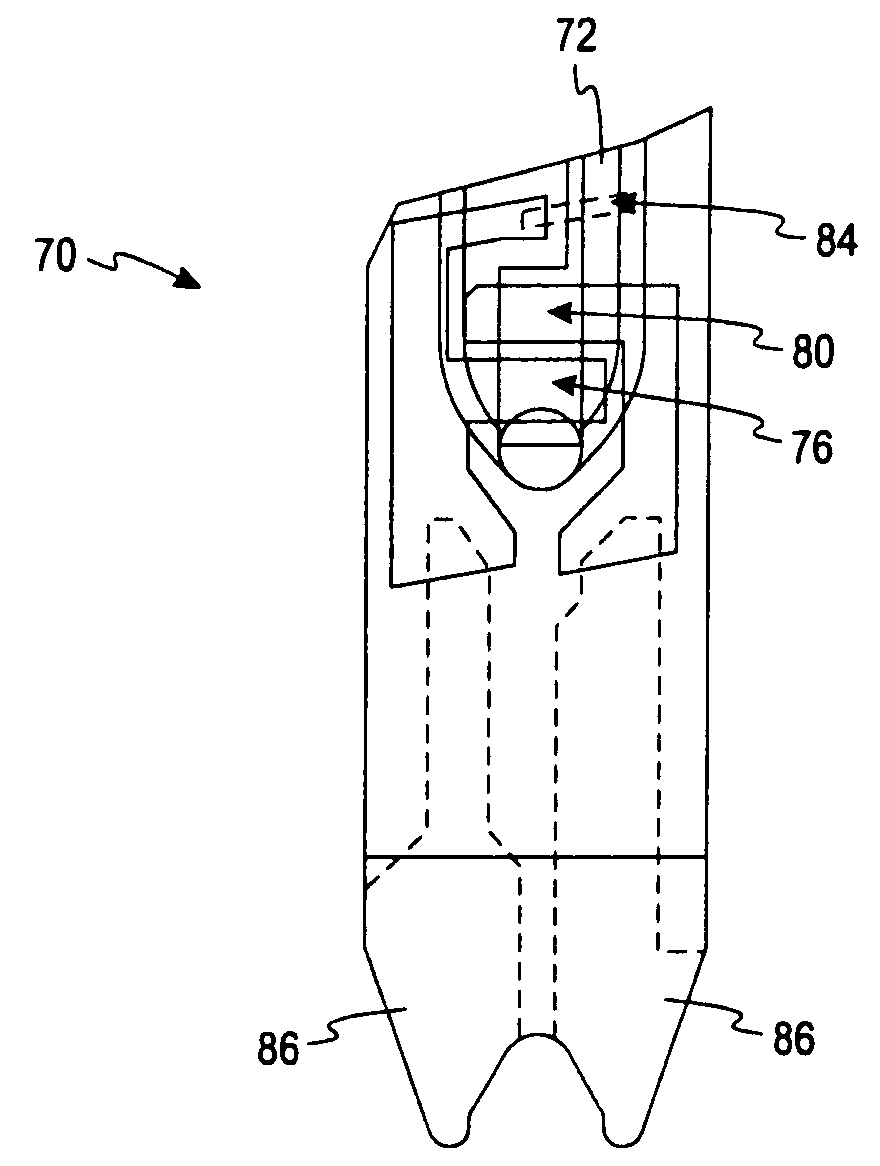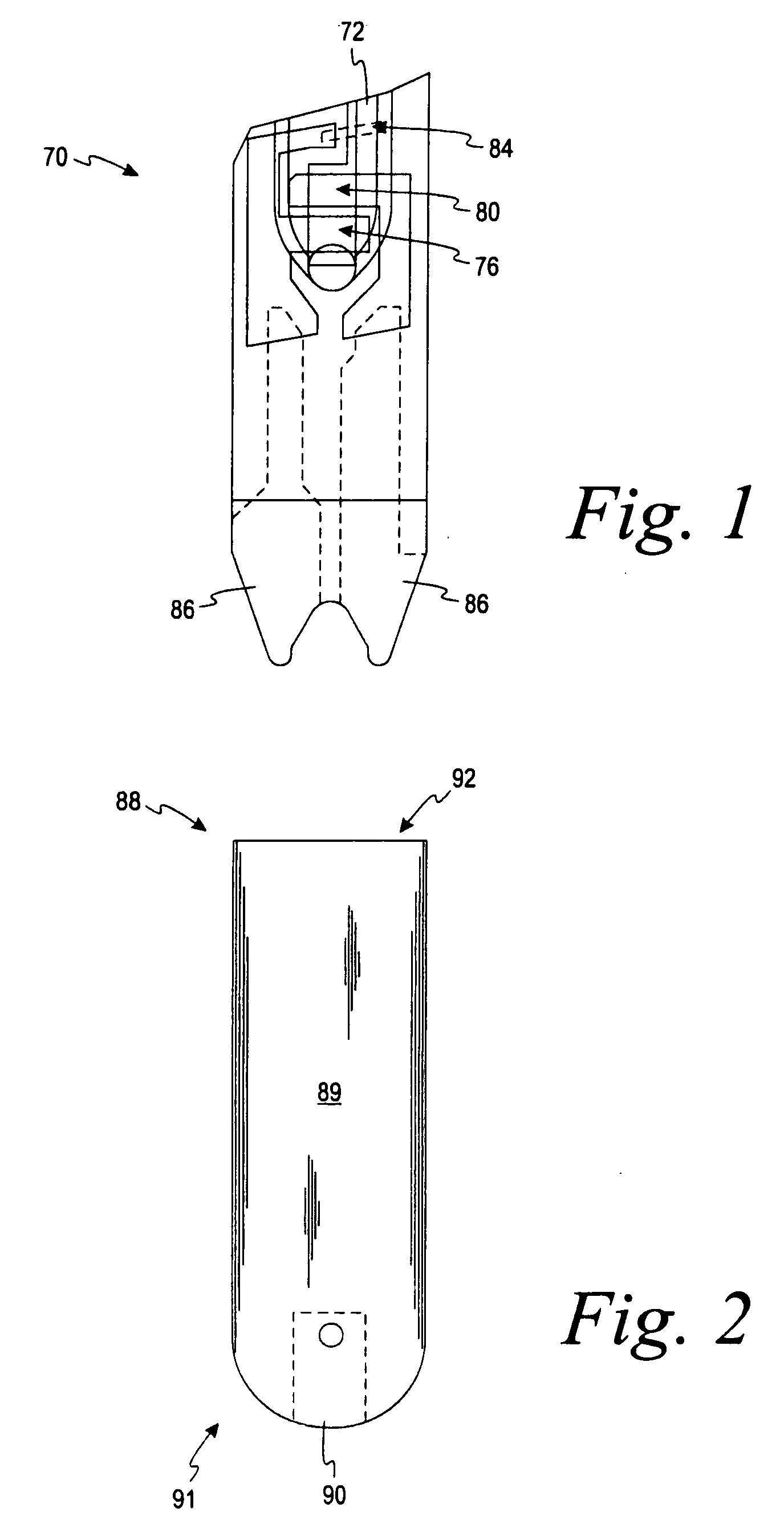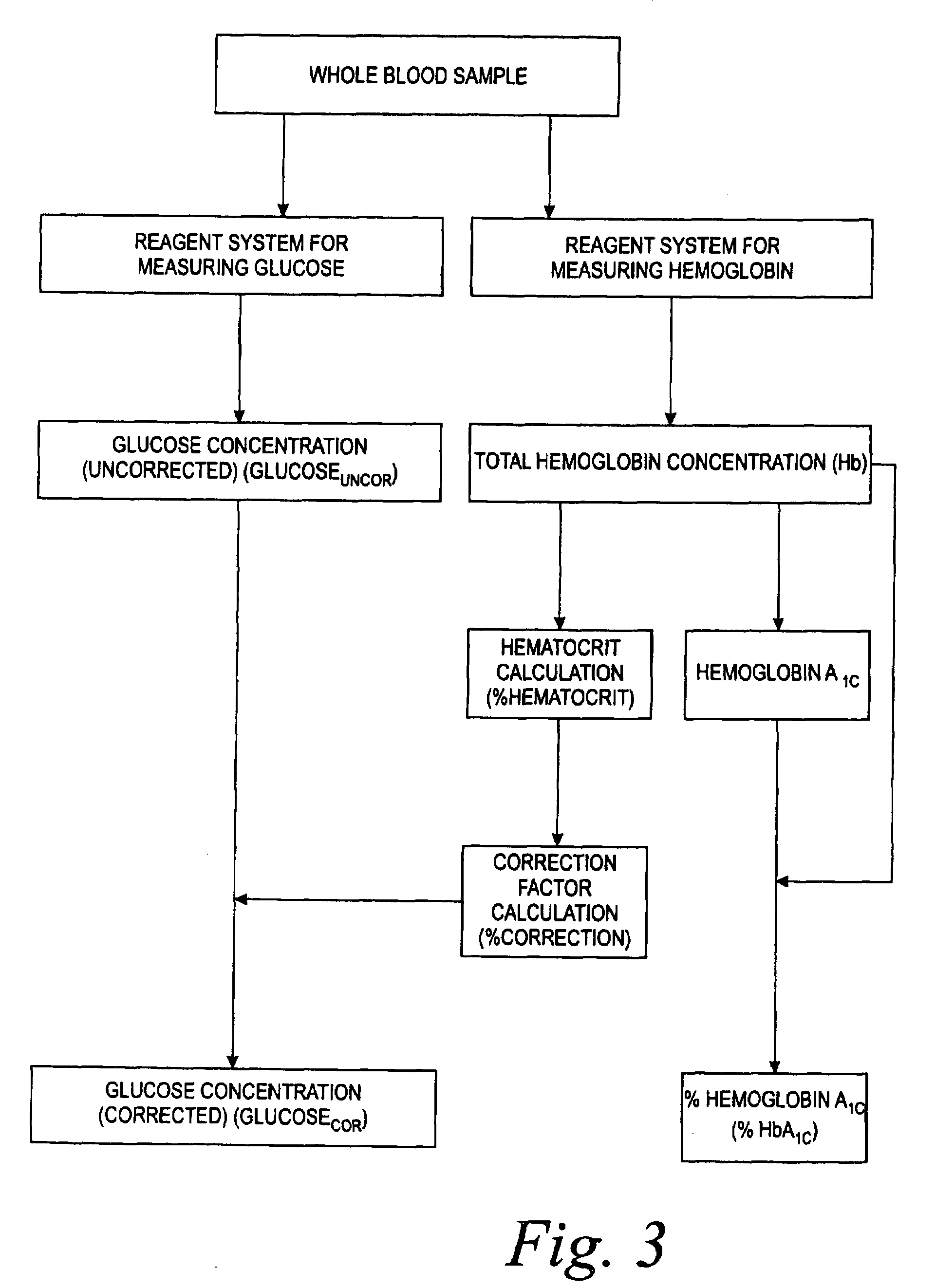Method for performing correction of blood glucose assay bias using blood hemoglobin concentration
a technology of blood glucose assay and concentration, which is applied in the direction of instruments, suspensions and porous material analysis, chemical/physical/physicochemical processes, etc., can solve the problems of % affecting the blood glucose monitoring system, the bias caused by the hematocrit content of a blood sample can have an adverse effect on patients, and patients may drop their glucose level too low
- Summary
- Abstract
- Description
- Claims
- Application Information
AI Technical Summary
Benefits of technology
Problems solved by technology
Method used
Image
Examples
Embodiment Construction
[0020]Embodiments of the invention are, in part, based on the discovery that the performance of glucose-monitoring devices or systems may be improved by adjusting the blood glucose value based on sample hematocrit level in glucose-monitoring devices or systems. It has been discovered that by using the methods and devices described herein, a more accurate glucose reading can be obtained. By obtaining a more accurate glucose reading, a more accurate assessment of the glycermic stage of a patient can be obtained and readily reported to the patient's physician.
[0021]As used herein, the term “blood glucose assay bias” is defined as a trend in the collection, analysis, interpretation, or review of glucose data from a glucose assay that leads to the conclusion that the patient's measured glucose level of the blood sample is systematically different from the patient's actual glucose level.
[0022]The present invention generally includes measuring the blood glucose concentration and the total ...
PUM
 Login to View More
Login to View More Abstract
Description
Claims
Application Information
 Login to View More
Login to View More - R&D
- Intellectual Property
- Life Sciences
- Materials
- Tech Scout
- Unparalleled Data Quality
- Higher Quality Content
- 60% Fewer Hallucinations
Browse by: Latest US Patents, China's latest patents, Technical Efficacy Thesaurus, Application Domain, Technology Topic, Popular Technical Reports.
© 2025 PatSnap. All rights reserved.Legal|Privacy policy|Modern Slavery Act Transparency Statement|Sitemap|About US| Contact US: help@patsnap.com



